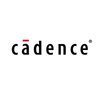Filter interviews by
Intel Component Design Engineer Interview Questions, Process, and Tips
Intel Component Design Engineer Interview Experiences
14 interviews found
Component Design Engineer Interview Questions & Answers
posted on 2 Dec 2016
I applied via campus placement at Indian Institute of Technology (IIT), Chennai and was interviewed in Dec 2016. There were 5 interview rounds.
Interview Questionnaire
2 Questions
- Q1. Questions from weste harris
- Q2. Why not? Why you? Why Mtech ? Why IITM
- Ans.
Passionate about component design, seeking advanced knowledge and skills through Mtech at IITM.
Passion for component design drives me to pursue further education and specialization.
Mtech at IITM offers a comprehensive curriculum and top-notch faculty in the field of component design.
I believe that the combination of my passion, drive, and the resources at IITM will enable me to excel in component design.
Interview Preparation Tips
Experience: Aptitude only just a formality selected based on resume they wanted all guys who did VLSI mtech
Duration: 1 hour
Total Questions: 25
Round: Technical Interview
Experience: Questions about setup time one small piece of verilog code verification etc
Round: HR Interview
Experience: It was splendid
College Name: IIT Madras
I applied via Referral and was interviewed before Aug 2023. There were 2 interview rounds.
(2 Questions)
- Q1. What are the collaterals in PDK
- Ans.
Collaterals in PDK refer to additional files and documents that provide information and support for the Process Design Kit.
Collateral files may include documentation on process technology, design rules, device models, and simulation parameters
These collaterals help designers understand and utilize the PDK effectively
Examples of collaterals in PDK are process design rules (PDR), technology files, and layout design guide
- Q2. How do you resolve soft connect errors in LVS
- Ans.
Soft connect errors in LVS can be resolved by adjusting the connectivity rules and verifying the layout.
Review the connectivity rules to ensure they are correctly defined
Check for any missing or incorrect connections in the layout
Verify the layout against the design to identify and fix any discrepancies
Use debugging tools to pinpoint the source of the soft connect errors
(2 Questions)
- Q1. Explain parasitics of a device
- Ans.
Parasitics of a device refer to unwanted electrical properties that affect its performance.
Parasitics include resistance, capacitance, and inductance in a device.
They can cause signal delays, power losses, and interference.
Examples of parasitics are stray capacitance in a PCB trace or resistance in a wire.
Minimizing parasitics is crucial for optimizing device performance.
- Q2. How can you build a cap from a mos
- Ans.
A MOS capacitor can be built by creating a metal-oxide-semiconductor structure.
Start by depositing a layer of oxide on a silicon substrate
Then deposit a layer of metal on top of the oxide
Finally, connect the metal layer to a terminal for the capacitor
Skills evaluated in this interview

(1 Question)
- Q1. State machine design, work experience, setup and hold
What people are saying about Intel






I applied via campus placement at Indian Institute of Technology (IIT), Chennai and was interviewed in Dec 2016. There were 5 interview rounds.
Interview Questionnaire
7 Questions
- Q1. Questions on digital systems
- Q2. 9 coins, one heavy. how many tries?
- Q3. Represent gates using arithmetic operations
- Ans.
Gates can be represented using arithmetic operations like AND, OR, NOT, XOR, etc.
AND gate can be represented using multiplication
OR gate can be represented using addition
NOT gate can be represented using subtraction
XOR gate can be represented using modulo operation
Arithmetic operations can be used to design complex logic circuits
- Q4. BTech Project Based
- Q5. Why Intel?
- Ans.
Intel is a leader in the semiconductor industry with a strong focus on innovation and cutting-edge technology.
Intel has a reputation for being at the forefront of technological advancements
Intel invests heavily in research and development to stay ahead of the competition
Intel offers a challenging and rewarding work environment for engineers
Intel has a global presence and offers opportunities for career growth and devel...
- Q6. Any other company interested in?
- Ans.
Yes, I am also considering opportunities at Intel and AMD.
I have researched both companies and am impressed with their work in the semiconductor industry.
I believe my skills and experience would be a good fit for their component design teams.
I am open to exploring opportunities at other companies as well.
However, Intel and AMD are currently at the top of my list.
- Q7. My extra-curricular activities
Interview Preparation Tips
Experience: Toooo easy aptitude test, questions straight from Indiabix.com. 91 people were shortlisted to the interviews.
Tips: Just practice a few on Indiabix.com I would say, not even required to prepare.
Duration: 1 hour
Total Questions: 20
Round: Technical Interview
Experience: Once again, very easy. Just very very basic. Maximum, you need Digital IC Design course.
Tips: No tips, keep your calm and think.
Round: Technical + HR Interview
Experience: Completely based on my B.Tech Project. They were a specific product development team looking for candidates for their team.
Tips: Just try to match their needs by relating everything on your resume to them.
Round: HR Interview
Experience: Just random questions about you and your activities.
Tips: Nothing much from my side to offer here. 29 people got the offer. I was the only one who got it and rejected.
Skills: Digital Systems, Puzzle Solving Capability
College Name: IIT Madras
Intel interview questions for designations
I applied via campus placement at Indian Institute of Technology (IIT), Chennai and was interviewed in Dec 2016. There was 1 interview round.
Interview Questionnaire
1 Question
- Q1. A given black box was given out of which two input signals a clock and one output signal was coming out .. the waveforms of all the signals were displayed. Write a verilog code to synthesize this circuit
- Ans.
Verilog code to synthesize a black box with clock input and one output signal.
Identify the functionality of the black box
Write the code for the input and output signals
Use Verilog modules to synthesize the circuit
Interview Preparation Tips
Experience: Upon inspection of the inputs and the clock signals i found out that it was a fsm machine and then i had to write state diagram with two inputs and two states along with dont care states also.there were three always blocks in the verilog code.
Tips: dotn give up easily ..even if you don't get keep suggesting,the interviewer will help you in the process
Skills: Verilog Skills, MOS , FINITe state machines, Digital Design
College Name: IIT Madras
Get interview-ready with Top Intel Interview Questions
I applied via campus placement at Indian Institute of Technology (IIT), Chennai and was interviewed in Dec 2016. There was 1 interview round.
Interview Questionnaire
2 Questions
- Q1. Timing Analysis , what changes are required if circuit violets hold time and set up time constraints.
- Ans.
Timing analysis changes for violating hold time and set up time constraints.
For violating hold time constraint, the circuit needs to be redesigned to increase the delay of the data path.
For violating set up time constraint, the circuit needs to be redesigned to decrease the delay of the data path.
Hold time violations can be resolved by inserting additional flip-flops or increasing the clock-to-Q delay.
Set up time viola...
- Q2. Explain project.
- Ans.
I designed a component for a new smartphone model.
Developed a compact and efficient component for a smartphone
Collaborated with a team of engineers to ensure compatibility and functionality
Performed extensive testing and analysis to optimize performance
Implemented design changes based on feedback and requirements
Ensured compliance with industry standards and regulations
Interview Preparation Tips
Experience: Explain set up and hold time
College Name: IIT Madras
I applied via campus placement at Indian Institute of Technology (IIT), Chennai and was interviewed in Dec 2016. There was 1 interview round.
Interview Questionnaire
3 Questions
- Q1. Questions were from Domino Logic, Timing analysis (Setup and hold violation), pipelining and cross talk
- Q2. Questions were from VLSI design flow, Timing analysis (Setup and hold violation)
- Q3. Questions were from basic combinational circuits , physical design questions ( based on speed improvement, low power consumption, area), Stick diagrams
Interview Preparation Tips
Tips: Read Digital IC and Digital Systems and basic semiconductor devices.
Round: Technical Interview
Tips: Read Timing analysis properly, VLSI design flow (Read each level of abstraction in VLSI properly).
Round: Technical Interview
Tips: Read Digital IC and Digital Systems and basic semiconductor devices.
Skills: Digital Circuits, Setup And Hold Times Issues, Semiconductor, Digital IC Design
College Name: IIT Madras
I applied via campus placement at Indian Institute of Technology (IIT), Chennai and was interviewed in Dec 2016. There were 5 interview rounds.
Interview Questionnaire
2 Questions
- Q1. Timing Analysis
- Q2. Why do you want to join intel What do you know about Intel
- Ans.
I want to join Intel because of its reputation for innovation, cutting-edge technology, and opportunities for growth.
Intel is a leading technology company known for its innovation in semiconductor manufacturing
Intel is a major player in the computer hardware industry, producing CPUs, GPUs, and other components
Intel has a strong focus on research and development, constantly pushing the boundaries of technology
Intel offe...
Interview Preparation Tips
I applied via campus placement at Indian Institute of Technology (IIT), Chennai and was interviewed in Dec 2016. There were 3 interview rounds.
Interview Preparation Tips
Experience: Mostly all with cgpa above 7 got shortlisted
Round: Technical Interview
Experience: They asked some basic digital design questions, like flip-flip, latch-latch timing analysis, NAND NOR cmos structure, electromigration, cross-talk, Domino logic, Dynamic logic.
Tips: Study material: Digital IC design, Digital systems.
Round: Technical Interview
Experience: They asked questions from the resume- about the courses, projects and stuff.
Tips: Study about your projects properly you should know what you have done in that project.
College Name: IIT Madras
I applied via campus placement at Indian Institute of Technology (IIT), Chennai and was interviewed in Dec 2016. There were 4 interview rounds.
Interview Questionnaire
2 Questions
- Q1. Questions based on resume and projects
- Q2. Questions on Verilog , timing analysis, course project based on Verilog, questions from the courses which I took
Interview Preparation Tips
Experience: Questions were asked from number theory-remainders, permutation and combinations, probability, ratio, compound interest, partnership ,etc .
Tips: Most questions were doable. Practicing aptitude questions will be sufficient.
Duration: 1 hour
Total Questions: 25
Round: Technical Interview
Experience: They asked me to explain my course project and other projects in detail. Then they asked everything
Tips: Prepare whatever you have put in the resume.
Round: Technical Interview
Experience: Firstly, they asked me to explain my DSP Embedded course project in detail. Then they asked series of follow-up questions. Then they gave two i/p waveforms, one o/p waveform and a clock signal, and asked me to write Verilog code for the output signal. Then they asked questions from the courses which I took.
Tips: Prepare Verilog, digital ic design and projects well.
College Name: IIT Madras
I applied via campus placement at Indian Institute of Technology (IIT), Chennai and was interviewed in Dec 2016. There were 3 interview rounds.
Interview Questionnaire
6 Questions
- Q1. Draw a domino logic circuit
- Ans.
A domino logic circuit is a type of digital circuit that uses a chain of inverters to propagate a signal.
A domino logic circuit consists of a chain of inverters connected in series.
The output of each inverter is connected to the input of the next inverter.
The input signal is applied to the first inverter in the chain.
The output of the last inverter in the chain is the output of the circuit.
Domino logic circuits are fas...
- Q2. How to speed up a circuit. Can voltage scaling be helpful
- Ans.
Yes, voltage scaling can help speed up a circuit by increasing the voltage to improve signal propagation.
Increasing the voltage can reduce the resistance and capacitance effects, leading to faster signal propagation.
Voltage scaling can also increase the switching speed of transistors, improving overall circuit performance.
However, higher voltage levels may also increase power consumption and generate more heat, requiri...
- Q3. Static timing analysis. Asked to write equation for a circuit with 2 flipflops with a latch in middle(latch clock has a delay from FF clock). Concept of time borrowing
- Q4. Transistor level designs for simple logic gates
- Ans.
Transistor level designs involve using transistors to create simple logic gates.
Transistors can be used to create logic gates such as AND, OR, and NOT gates.
In an AND gate, two transistors are connected in series.
In an OR gate, two transistors are connected in parallel.
In a NOT gate, a single transistor is used.
Logic gates can be combined to create more complex circuits.
- Q5. Why Intel?
- Q6. Asked about my PoRs
Interview Preparation Tips
Experience: Be clear about
Tips: Static timing analysis, Transistor level implementations
Round: HR Interview
Experience: Just for formality.
Tips: Show to enthusiasm to work in Intel
College Name: IIT Madras
Intel Interview FAQs
Some of the top questions asked at the Intel Component Design Engineer interview -
Tell us how to improve this page.
Intel Interviews By Designations
- Intel Software Engineer Interview Questions
- Intel Intern Interview Questions
- Intel Component Design Engineer Interview Questions
- Intel SOC Design Engineer Interview Questions
- Intel Graduate Trainee Interview Questions
- Intel Software Developer Interview Questions
- Intel Software Engineer Intern Interview Questions
- Intel Verification Engineer Interview Questions
- Show more
Interview Questions for Popular Designations
- Component Engineer Interview Questions
- Design Engineer Interview Questions
- Mechanical Engg. Design Interview Questions
- Senior Design Engineer Interview Questions
- R&D Engineer Interview Questions
- Structural Engineer Interview Questions
- Electrical Design Engineer Interview Questions
- Research and Development Interview Questions
- Show more
Intel Component Design Engineer Interview Process
based on 2 interviews
4 Interview rounds
- Technical Round
- HR Round
- Aptitude Test Round
- Personal Interview1 Round
Interview Questions from Similar Companies
Fast track your campus placements
Intel Component Design Engineer Reviews and Ratings
based on 4 reviews
Rating in categories
|
Software Engineer
340
salaries
| ₹12 L/yr - ₹45 L/yr |
|
SOC Design Engineer
222
salaries
| ₹11 L/yr - ₹36 L/yr |
|
System Validation Engineer
168
salaries
| ₹8.7 L/yr - ₹38.1 L/yr |
|
Software Development Engineer
156
salaries
| ₹10 L/yr - ₹40 L/yr |
|
Design Engineer
155
salaries
| ₹11.5 L/yr - ₹45.4 L/yr |

Qualcomm

Nvidia

Microsoft Corporation

Advanced Micro Devices
- Home >
- Interviews >
- Intel Interview Questions >
- Intel Component Design Engineer Interview Questions





















